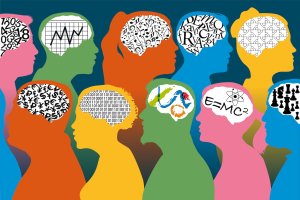Devastating conditions like major depression, bipolar disorder, schizophrenia, and obsessive-compulsive disorder are among the leading causes of disability in established market economies, according to Johns Hopkins Medicine. In the U.S., more than one in four adults was suffering from a diagnosable mental disorder even before the pandemic.
For too long, cost and access barriers to mental health care have caused incalculable suffering.
Covid has now blown the lid off a crisis building for decades. So why isn’t there a plan to deal with it?
A Runaway Train Accelerating
The Lancet reports that cases of mental disorders have skyrocketed during the pandemic, including 53 million new cases of major depressive disorder and 76 million new cases of anxiety disorders. In the U.S., since spring of 2020, the National Center for Health Statistics has partnered with the Census Bureau on a new, rapid-turnaround data system to monitor depression and anxiety, finding that just over half of adults between the ages of 18 and 44 surveyed have reported symptoms, as have 38% of adults living with children.
Researchers find that younger adults, racial and ethnic minorities, essential workers, and unpaid adult caregivers (most of them women), have been especially hard-hit by mental distress and increased substance use. Growing alcohol use is particularly worrisome among stretched-to-the-breaking-point young women juggling children under the age of five and work responsibilities. Feedback loops within families mean that distressed parents transfer their anxiety and depression to children and vice versa. Three top U.S. organizations specializing in child and adolescent mental health, including the American Academy of Pediatrics, recently declared a state of emergency for the country’s youth, noting that Covid-19 and the ongoing struggle for racial justice have compounded trends of declining mental health among kids observed prior to 2020.
Many people find themselves in so much pain, they think about dying. Suicide attempts by young girls are notably on the rise. Young people unable to obtain mental health care are being sent to hospital emergency rooms, where the staff are under their own intense stress due to private equity takeovers of health care and the spillovers of an inadequate care system.
We can’t go on like this. Yet as alarming as it all sounds, signs indicate the crisis may only intensify. Covid-19 case rates may be falling in some areas, but the stresses associated with the pandemic are far from over – particularly as new variants spread, causing further disruption.
In the U.S., those needing help face a serious shortage of mental health specialists (themselves often suffering from burnout and stress), a reduced number of psychiatric hospital beds, and a loss of job-based health insurance. Even for those who have insurance, a lack of in-network counselors and therapists means that care is frequently out of reach. And if you don’t live in a city, you may be out of luck: In some states, 80% of the population lives in an area where mental health professionals are scarce.
The upshot is that millions are going without the treatment they require. People are unable to sleep, gaining weight, and turning to potentially harmful strategies as they struggle to cope with grief, loss, isolation, family and workplace stress, and economic woes, including the latest worries about inflation.
A Neurotoxic Virus
The coronavirus itself attacks the mind. The infected may experience psychological symptoms like brain fog, and for some, the virus is nowhere near done with them after the initial infection. Long-haulers face a nasty list of potential psychiatric disorders, from phobias to anxiety. Some estimates suggest that as many as one in five people infected with Covid experience such disorders within three months. They get better, then they get worse, then they get better – up and down on a hellish rollercoaster.
That’s not all — research has shown that those recently diagnosed with a mental disorder were significantly more likely to contract Covid — and they tended to have worse outcomes than people infected who don’t have a mental disorder. Researchers now suspect that having schizophrenia is second only to advanced age as the highest risk factor for dying of Covid. Nobody knows exactly why.
Viruses have long been linked to mental illness, though just how they relate is not well-understood. As early as 1732, clinicians noted that the flu often came with symptoms like neurasthenia, melancholy, hysteria, mental prostration, and insanity. When Covid hit, researchers looked back at the impact of the Spanish flu and other pandemics on mental health. Available data was scant, but demographer Svenn-Erik Mamelund had studied an increase in asylum hospitalizations from 1872 to 1929, finding that the number of first-time hospitalized patients with mental disorders attributed to influenza rose by an average annual factor of 7.2 in the 6 years following the Spanish flu pandemic. He also found that Spanish flu survivors reported sleep disturbances, depression, mental distraction, dizziness, and difficulties coping at work, and that influenza death rates in the U.S. during the years 1918-1920 were significantly and positively related to suicide rates.
Researchers in Great Britain reported an uptick in various nervous symptoms in patients recovering from Spanish flu infections, including neurasthenia, depression, nerve cell damage, and visual problems. Cases of encephalitis lethargica, an inflammatory central nervous system condition featuring psychotic and catatonic symptoms, also became common – 1 million cases were reported from the beginning of the Spanish flu pandemic in 1916 until the early 1930s. Clinicians surmised a link between the two, though causality is not established.
The Spanish flu, and other types of flu, have been linked to psychosis. Early observers of influenza, including Karl Menninger in 1919, noted that people who contracted flu showed a variety of psychotic symptoms, particularly schizophrenia, and theorized that the viruses were neurotoxins. They were onto something. Evidence indicates that Covid is indeed a neurotoxin.
Over the course of the current pandemic, doctors have seen infected teens suffer sudden psychosis, and researchers are wondering if brain inflammation or immune reactions may account for psychotic symptoms in Covid patients with no history of psychiatric complaints.
The coronavirus highlights the insufficiency of an outdated medical perspective separating the mind from the body. Viruses and other things that harm our bodies frequently affect our mental well-being, and vice-versa.
Social Toxins Spreading
Like wars and other devastating events, pandemics produce a wide range of mental health issues that hit poor and vulnerable groups especially hard. Covid is no exception.
Researchers Anne Case and Angus Deaton brought the term “deaths of despair” into public awareness with their studies of how mortality rates had risen sharply among certain populations since the 1990s. Their work has highlighted how the impact of stressors tends to widen the gulf between haves and have-nots already affecting the U.S and other countries.
Shannon Monnat of the Institute for New Economic Thinking and researchers at the Brookings Institute point to increased stress from Covid-19 on populations already facing rising deaths of despair, particularly those in rural areas. Monnat, who tracked deaths of despair related to the opioid crisis prior to the pandemic, has been studying how the coronavirus has been affecting populations of drug users in New York state. She has found that drug supply chain disruptions, including the increased appearance of deadly fentanyl as filler, along with other Covid-related factors like increased loneliness and isolation, appear to have helped fuel an increase in overdoses. She sees a breakdown in trust as an added stressor in areas where overdoses are high: “Trust in government, trust in media, trust in science, even trust in your own family have been strained…Families have been torn apart because of different willingness to accept facts.”
The pandemic, Monnat notes, has “accelerated a disruption in the social fabric of communities.”
People are feeling lonelier than ever. Even before the pandemics, researchers had begun to focus on the links between social isolation and loneliness and declining mental health, along with reduced lifespans and heightened risk for disease. Harvard researchers find that older teens and young adults are especially vulnerable to loneliness and isolation. They observe that people this age are particularly in need of a “robust social infrastructure,” which includes supportive connections with schools, doctors, and employers. Since many do not have such infrastructure, the reliance on social media to find a sense of connection increases. Yet studies show links between social media use and even more feelings of loneliness, particularly when online interactions replace face-to-face connecting. Recent revelations about Facebook (now changing its name to “Meta”) from whistleblower Frances Haugen, a former employee of the company, show that Facebook was aware of its negative impact on teen mental health – especially girls — but did nothing about it.
The Cost of Ignoring Mental Health
The costs of mental illness are staggering, in human suffering and in dollars. In the U.S., 10% of insured people make up 70% of the total spending on health care. Of that high-cost group, more than half are seeking treatment for behavioral health. Mental health spending is rising twice as fast as overall medical spending. Shockingly, nearly half of people seeking treatment for mental distress get the wrong diagnosis.
In 2016, data from the National Health Expenditure Accounts showed that mental disorders were already the most expensive conditions in the U.S. in terms of health care spending—costing $201 billion. Heart disease, by way of comparison, cost $147 billion, and cancer, $122 billion. Of course, mental health issues and physical ailments like heart disease are often intimately related, so the cost of mental distress is likely even higher when vulnerability to disease is factored in.
People in mental distress can’t work at optimum levels. The loss of productivity as a result of two of the most common mental disorders, anxiety and depression, costs the global economy US$ 1 trillion each year. Affected employees quit, leading to replacement costs.
It should be clear by now that mental well-being will have to be a higher priority in plans for national and global recovery. It’s encouraging to see positive steps taken in the two stimulus packages, such as increased funds for mental health and substance abuse services, and the push to increase the use of telehealth for mental health services, such as expansions of coverage for such, will be helpful to some sufferers.
Going forward, some of the provisions in the Build Back Better Act (BBB), including investments in public health, child care, Medicaid expansions, and paid leave (a paltry 4 weeks, but better than nothing) will help to ease the strain on some – if they are enacted. The Act allocates $165 million to mental well-being, including $75 million for improving the National Suicide Prevention Line; $50 million for the mental health and substance abuse workforce in addressing the needs of communities of color; $25 million for peer-based programs to support substance abuse treatment; and $15 million for a program to educate school-aged youth about mental health issues. This is good, but it’s not nearly enough. And Thomas Ferguson, Director of Research at the Institute for New Economic Thinking, warns that rapid withdrawal of most Covid support spending, especially for health care, is likely to make things worse in the near term.
We need to think in terms of more transformative changes to address what is making us so unwell in the first place. Extreme inequalities and the wide range of pathologies generated by an economic model and political system that favors the interests of the wealthy and corporations are not yet being addressed. The priority of wealth for the few over health for the many is upside down. As our anxiety and depression increase, politicians can manipulate us into directing our frustration at various bogeymen, from immigrants to the unemployed. When we feel we have little power in our lives, many turn to guns for an illusory sense of control, creating more dangerous and tense conditions. When we feel disconnected, we may sink further into the unreal worlds of social media and gaming. The coming metaverse looks like a virtual world that could swallow us entirely. Mark Zuckerberg gushes that “creation, avatars, and digital objects are going to be central to how we express ourselves,” but others call it a “dystopian nightmare.” It will certainly have profound implications for mental health.
Mental distress is not just personal. It’s collective and political. An inadequate social safety produces mental illness. Income that can’t keep up with inflation causes it. So does a lack of child care and care for the elderly. And feeling like your kids will be worse off than you. Environmental damage and unregulated companies create mental illness. Misguided policies traumatize individuals, families, communities, and ultimately, our entire society.
The pandemic’s impact on mental health was predictable. In October 2020, the American Psychological Association released a report warning of a second pandemic, one of plummeting mental health, that would outlast the virus. What is also predictable is that recovery requires a comprehensive approach to support our mental well-being, individually and collectively.






